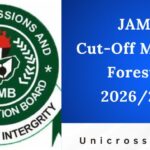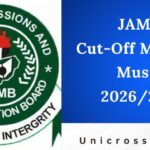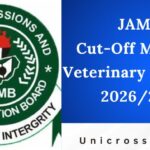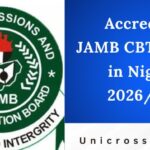JAMB Areas of Concentration for Geography: Geography plays a vital role in understanding the world we live in, from the natural landscapes that shape our planet to the human activities that influence societies and economies. For students preparing for the Joint Admissions and Matriculation Board (JAMB) Unified Tertiary Matriculation Examination (UTME) in 2026/2027, mastering Geography is essential, especially for those aspiring to study fields like environmental science, urban planning, geology, or international relations. The JAMB Geography syllabus serves as a roadmap, outlining key topics that test candidates’ ability to analyze maps, interpret environmental data, and apply geographical principles to real-world problems, with a strong emphasis on Nigeria and Africa.
The updated JAMB Areas of Concentration for Geography 2026/2027 builds on previous years’ frameworks but incorporates contemporary issues such as climate resilience, sustainable resource management, and digital mapping tools. Released through the Integrated Brochure and Syllabus System (IBASS), this edition reflects evolving global challenges like urbanization pressures in developing regions and the impacts of climate change on tropical ecosystems. Candidates are expected to demonstrate practical skills in handling topographical maps, statistical diagrams, and field surveys, alongside theoretical knowledge of physical and human geography.
This guide provides a comprehensive overview of the areas of concentration, divided into three main sections: Practical Geography, Physical Geography, and Human Geography. By focusing on these, students can prioritize high-yield topics likely to appear in the 40 to 50 multiple-choice questions allocated to Geography in the UTME. Effective preparation involves not only memorizing facts but also practicing map interpretation and problem-solving. With consistent study, candidates can aim for scores above 70% in this subject, boosting overall UTME performance. As you dive into these concentrations, remember that Geography is not just about locations; it is about connections between people, places, and the planet.
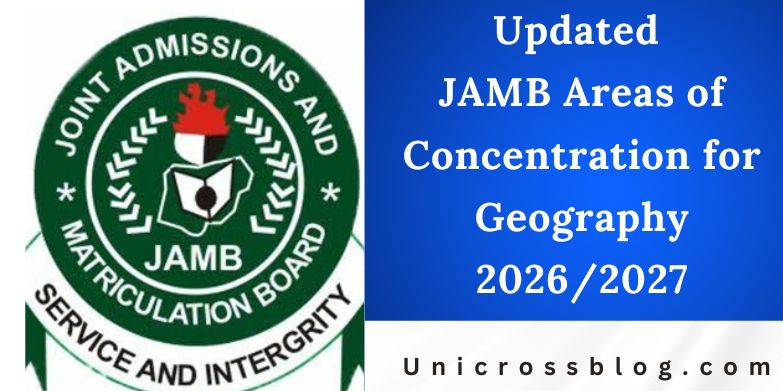
JAMB Areas of Concentration for Geography
1. Practical Geography
This section emphasizes hands-on skills essential for geographical analysis. Candidates must be proficient in interpreting visual and spatial data, which forms the foundation for higher-level problem-solving.
- Maps and Scales: Understand the types of maps, including topographic, thematic, and chorographic maps. Focus on scale calculations, such as representative fractions and verbal scales, and converting between them. Practice measuring distances and areas on maps, especially those depicting Nigerian terrains like the Jos Plateau or Niger Delta.
- Map Interpretation: Analyze contour lines to identify landforms such as hills, valleys, and plateaus. Identify human features like settlements, roads, and drainage patterns. Emphasize relief features in African contexts, such as the Ethiopian Highlands, and their influence on settlement patterns.
- Photographs and Diagrams: Differentiate between ground, oblique, and aerial photographs. Interpret statistical diagrams like pie charts, bar graphs, and flow lines to represent population distribution or trade flows in West Africa. Practice sketching cross-profiles from contour maps to visualize elevation changes.
- Surveying Techniques: Grasp basic principles of chain, plane table, and prismatic compass surveying. Calculate bearings and include simple field survey exercises, such as plotting a traverse in a local Nigerian community to determine plot sizes.
- Geographic Information Systems (GIS) Basics: Recognize the role of GIS in modern geography for overlay analysis and spatial querying. Apply this to environmental monitoring, like tracking deforestation in the Congo Basin using digital layers.
These practical elements test about 20% of the exam questions, requiring candidates to apply skills rather than rote learning.
2. Physical Geography
Physical Geography explores the natural processes shaping Earth’s surface, with a tropical focus relevant to Nigeria’s diverse climates and landforms.
- The Earth as a Planet: Describe the solar system, Earth’s rotation, and revolution, explaining day-night cycles, seasons, and time zones. Discuss the Earth’s shape and size, including proofs like satellite imagery, and eclipses in the context of African observational history.
- The Earth’s Crust: Outline major rock types (igneous, sedimentary, metamorphic) and their formation. Study plate tectonics, continental drift, and folding processes. Highlight Nigerian examples, such as the Basement Complex rocks in the southwest.
- Volcanism and Earthquakes: Explain causes of volcanoes and earthquakes, including types like shield and composite cones. Map global distribution and impacts, such as the 1980 Mount St. Helens eruption versus Mount Cameroon in Africa.
- Denudation Processes in the Tropics: Cover weathering (physical, chemical, biological) and mass movement. Detail fluvial erosion, transportation, and deposition, forming features like V-shaped valleys and deltas in the River Niger.
- Water Bodies: Classify oceans, seas, lakes, and rivers. Discuss ocean currents (e.g., Guinea Current) and tides, and their effects on Nigerian coastal economies like fishing in Lagos.
- Weather and Climate: Differentiate weather from climate, studying elements like temperature, pressure, humidity, and wind. Analyze climate types using Koppen’s classification, focusing on Nigeria’s tropical monsoon and savanna zones.
- Vegetation and Soil: Describe major biomes, including rainforests, grasslands, and deserts. Study soil profiles, formation, and fertility, with emphasis on lateritic soils in tropical Africa and erosion control methods.
- Environmental Resources and Hazards: Identify renewable (forests, water) and non-renewable (minerals) resources. Discuss hazards like floods, droughts, and desertification, and mitigation strategies such as afforestation in the Sahel region.
This section accounts for roughly 40% of questions, demanding a blend of descriptive knowledge and explanatory analysis.
3. Human Geography
Human Geography examines the interplay between people and their environments, with applications to economic and social development in Nigeria and Africa.
- Population and Demography: Analyze population distribution, density, and growth rates using pyramids and indices. Study factors influencing distribution, like migration push-pull models, and overpopulation issues in Lagos.
- Migration: Types include rural-urban, international, and forced (e.g., refugees in West Africa). Discuss causes, patterns like the brain drain from Nigeria, and impacts on origin and destination areas.
- Urbanization and Settlements: Define urban growth, classifying settlements as rural or urban. Examine site, situation, and patterns (linear, nucleated), with case studies of Nigerian cities like Abuja’s planned layout versus organic growth in Kano.
- Transportation and Trade: Modes include road, rail, water, and air, assessing their efficiency in Nigeria (e.g., Lagos-Ibadan rail). Study trade patterns, balance of payments, and regional blocs like ECOWAS.
- Economic Activities: Primary (agriculture, mining), secondary (manufacturing), tertiary (services). Focus on Nigerian agriculture (cash crops like cocoa) and industrialization challenges like power shortages.
- Manufacturing Industries: Location factors (raw materials, labor, markets) and types (heavy, light). Analyze clusters like Aba’s textile industry and global shifts affecting African economies.
- Commercial Activities: Retail, wholesale, and markets. Discuss informal sectors in Nigerian markets like Alaba and the role of e-commerce in urban trade.
- Transportation Systems: Networks and their development, including trans-Saharan routes’ historical significance. Evaluate accessibility in rural Nigeria and solutions like rural electrification.
These topics make up about 30% of the exam, linking theory to socio-economic realities.
READ ALSO: Updated JAMB Areas of Concentration for Physics 2026/2027
FAQs
How has the 2026/2027 Geography syllabus been updated from previous years?
The update emphasizes GIS integration and climate adaptation strategies, reflecting global priorities like the UN Sustainable Development Goals. Core topics remain stable, but examples now include recent events like 2024 Sahel droughts.
What percentage of marks comes from Practical Geography?
Approximately 20%, focusing on map and diagram skills. Practice with Nigerian topographic sheets to score well.
Are there recommended textbooks for this syllabus?
Yes, key ones include “Comprehensive Geography for Senior Secondary Schools” by R. B. Bunnett and “Essential Geography” by O.A. Iwena. Use them for diagrams and case studies.
How can I prepare for map interpretation questions?
Download sample topographic maps of Nigeria and practice daily. Focus on contour intervals and feature identification to build speed.
Is Nigeria-specific knowledge heavily tested?
Yes, about 60% of questions relate to Nigeria and Africa, such as resource distribution and urban challenges.
What if I struggle with environmental hazards?
Break it down: study causes, effects, and solutions separately. Relate to local examples like oil spills in the Niger Delta for better retention.
How many questions are in the Geography section?
Typically 40 to 50 multiple-choice questions, with varying difficulty.
Can I use past questions for preparation?
Absolutely. They align closely with the syllabus and help predict patterns in human geography topics.



